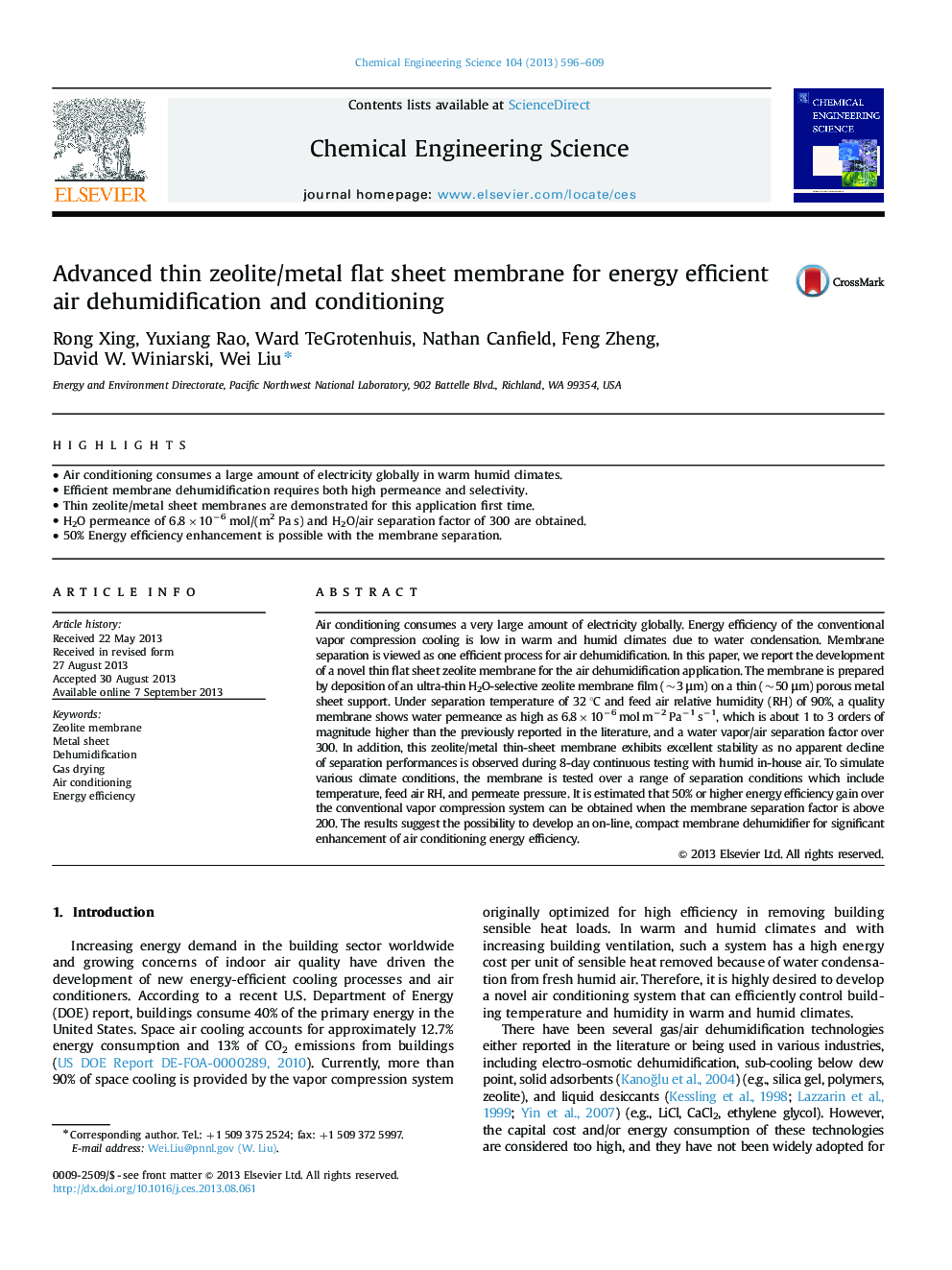| Article ID | Journal | Published Year | Pages | File Type |
|---|---|---|---|---|
| 6591579 | Chemical Engineering Science | 2013 | 14 Pages |
Abstract
Air conditioning consumes a very large amount of electricity globally. Energy efficiency of the conventional vapor compression cooling is low in warm and humid climates due to water condensation. Membrane separation is viewed as one efficient process for air dehumidification. In this paper, we report the development of a novel thin flat sheet zeolite membrane for the air dehumidification application. The membrane is prepared by deposition of an ultra-thin H2O-selective zeolite membrane film (~3 μm) on a thin (~50 μm) porous metal sheet support. Under separation temperature of 32 °C and feed air relative humidity (RH) of 90%, a quality membrane shows water permeance as high as 6.8Ã10â6 mol mâ2 Paâ1 sâ1, which is about 1 to 3 orders of magnitude higher than the previously reported in the literature, and a water vapor/air separation factor over 300. In addition, this zeolite/metal thin-sheet membrane exhibits excellent stability as no apparent decline of separation performances is observed during 8-day continuous testing with humid in-house air. To simulate various climate conditions, the membrane is tested over a range of separation conditions which include temperature, feed air RH, and permeate pressure. It is estimated that 50% or higher energy efficiency gain over the conventional vapor compression system can be obtained when the membrane separation factor is above 200. The results suggest the possibility to develop an on-line, compact membrane dehumidifier for significant enhancement of air conditioning energy efficiency.
Related Topics
Physical Sciences and Engineering
Chemical Engineering
Chemical Engineering (General)
Authors
Rong Xing, Yuxiang Rao, Ward TeGrotenhuis, Nathan Canfield, Feng Zheng, David W. Winiarski, Wei Liu,
